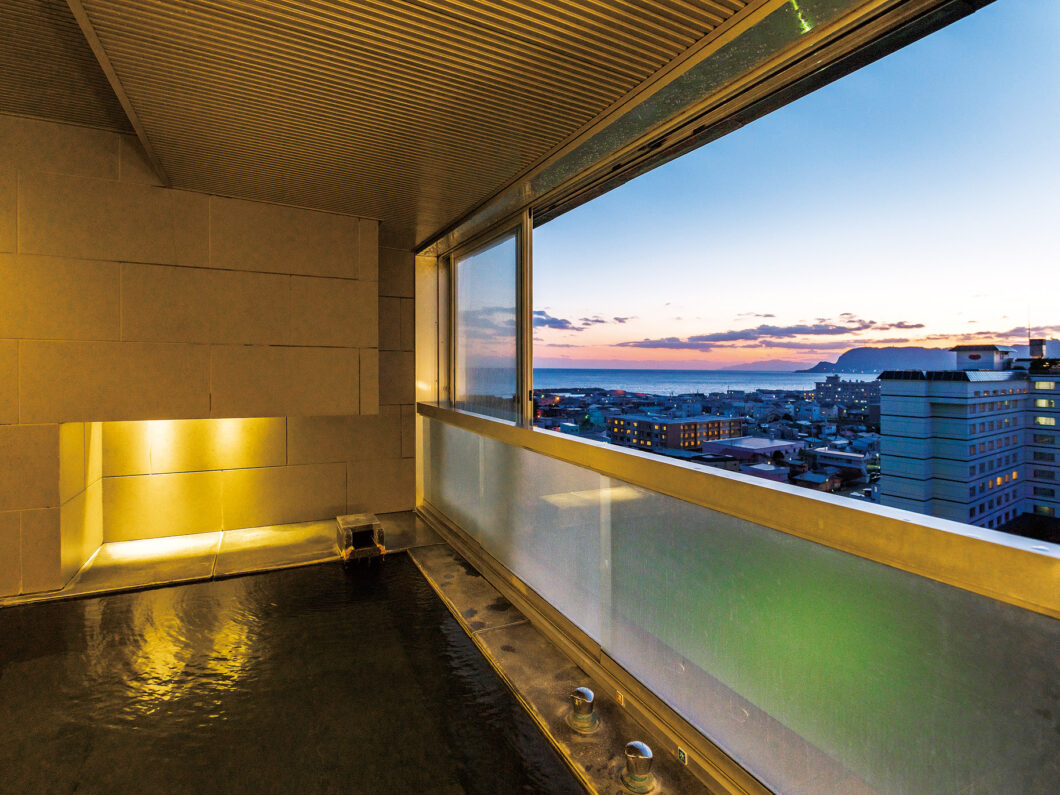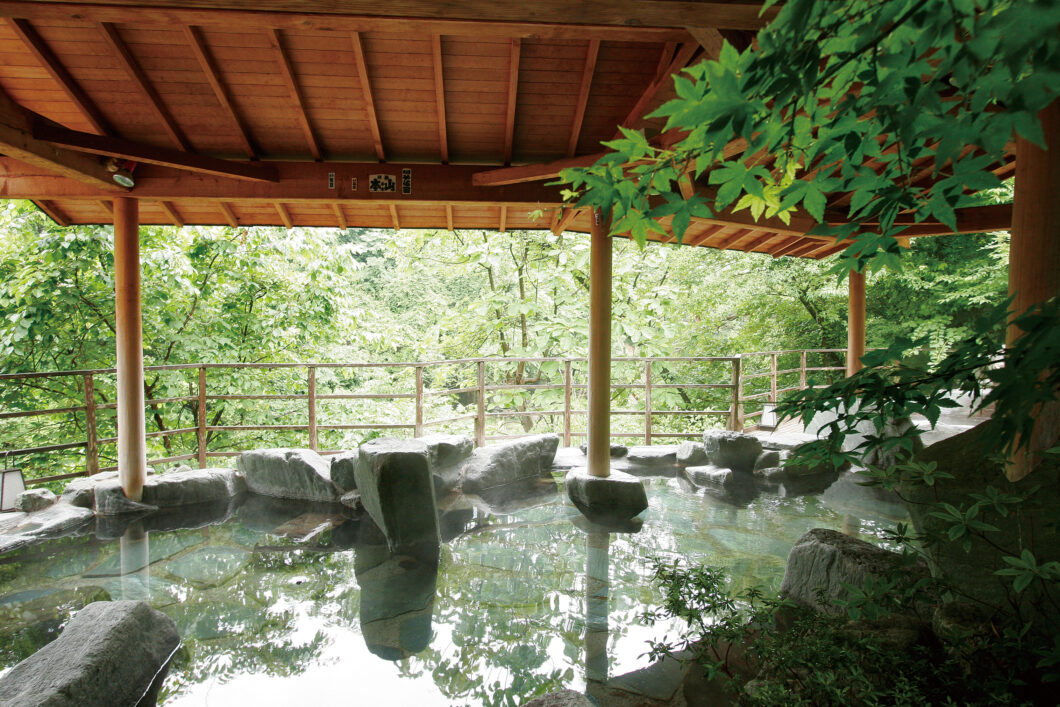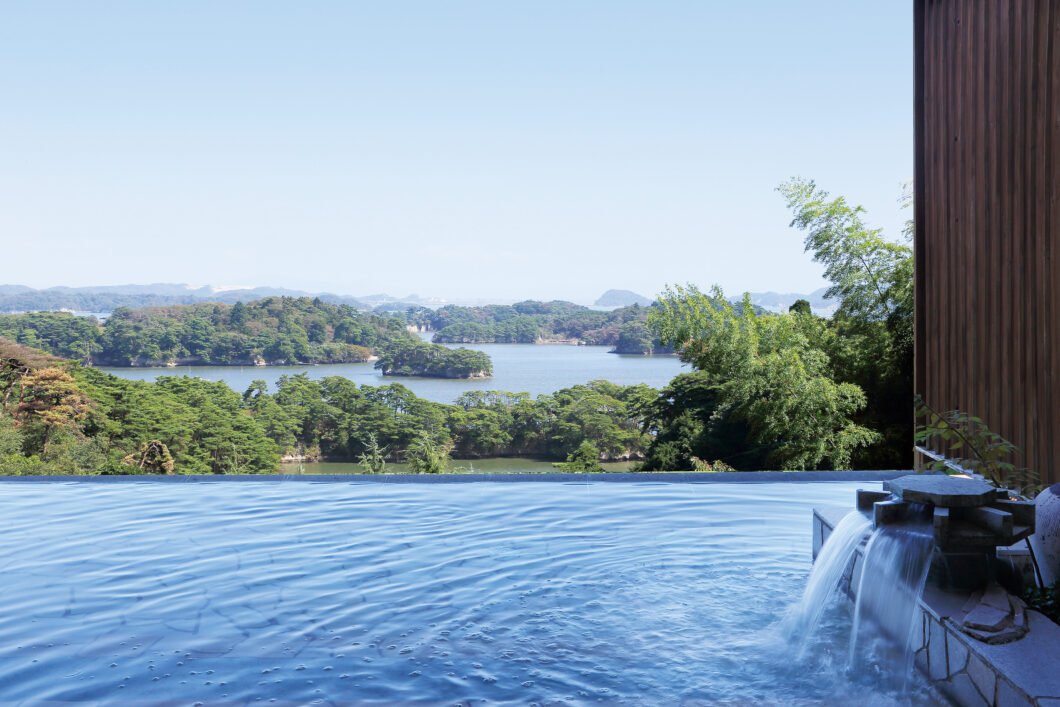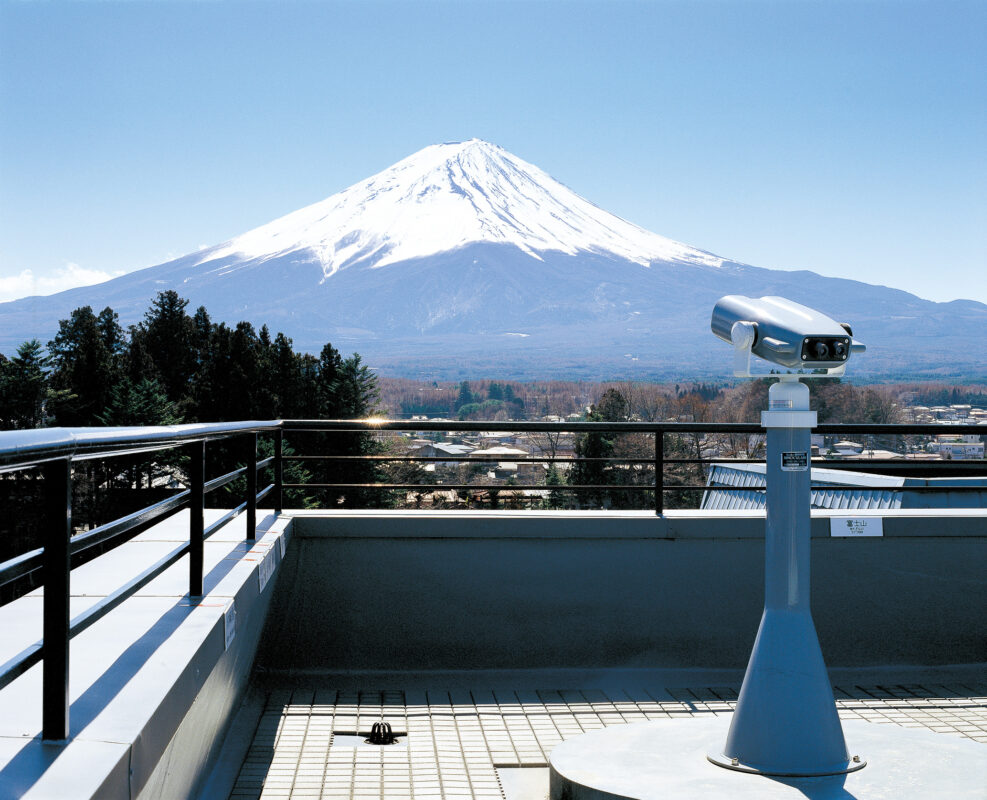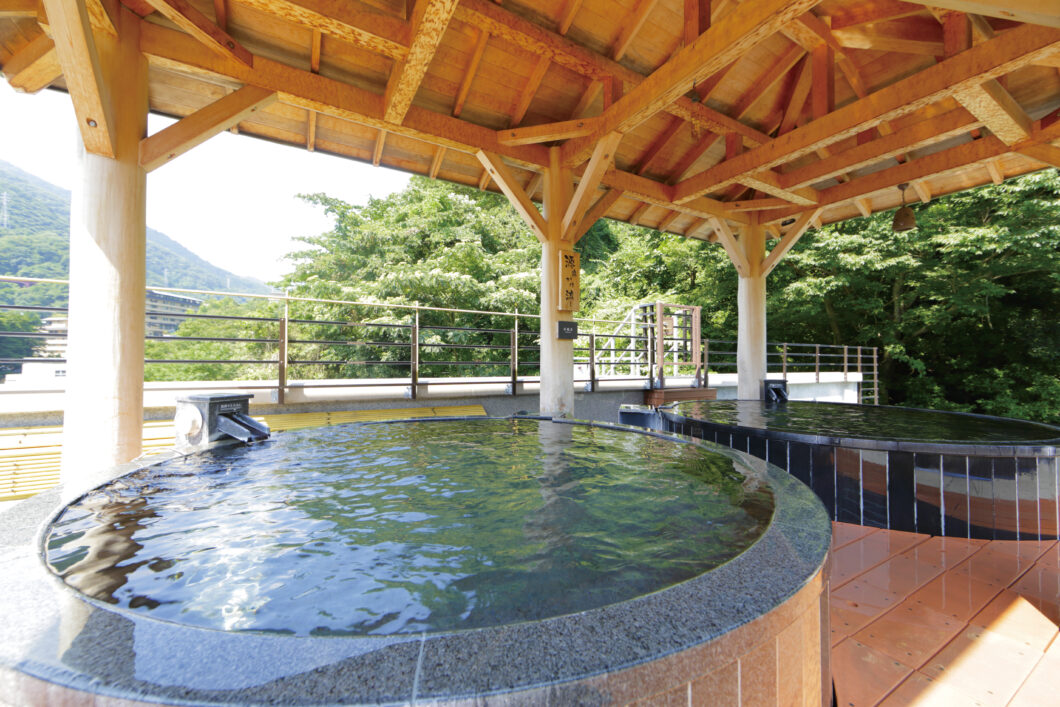Featured
At the large open-air bath at "Bourou NOGICHI Hakodate"in Yunokawa Onsen, Hokkaido
From the hot springs in the sky, with nothing blocking the view, you can watch the city of Hakodate and planes taking off and landing at Hakodate Airport during the day, and the Tsugaru Straits with fishing lights twinkling at night. As you walk through the nostalgic city of Hakodate, you will find many faces that you have yet to discover. The Minamikayabe area is dotted with the historic sites of Ofuna and Kakinoshima, which are part of the World Heritage Site "Jomon Sites in Hokkaido and Northern Tohoku." At the Hakodate City Jomon Culture Exchange Center adjacent to the Kakinoshima site, Hokkaido's first national treasure, the "Hollow Clay Figure," and excavated items are on display, allowing you to enjoy both a world heritage site and a national treasure at the same time. Hakodate is also the final resting place of Hijikata Toshizo, a member of the Shinsengumi who ran passionately through the end of the Edo period. After landing in Ezo, Hijikata Toshizo camped at Yunokawa and headed to Goryokaku. It is said that there is a high possibility that he bathed in Yunokawa Onsen on that occasion.
At Saruami no Yu and Kamoshika no Yu in Kamurominosato Yosikawaya , Okuiizaka Anabara Onsen
Long ago, a giant centipede appeared on the banks of the Surikami River, crossed Mount Katakura and began to devour children, causing trouble for the river goddess Benten. It was Tawara Touda who got rid of the centipede, and when he washed the blood off his clothes in the river, the cold water became warm and hot springs began to flow... This is the legend of the hot springs that is passed down in Anahara. The two open-air baths that Yosikawaya is proud of offer a spectacular view of the cliffs of Mount Katakura, decorated with nature, reminiscent of a world of legends. Based on this legend, Yosikawaya has started the "Kamurom Project". "Kamurom" means "goddess" and "Kamurominosato" means "hot springs guided by the river goddess". The anime character goddess Kamurom and the three sisters, Yosikawaya's original characters, have descended to the present world to relieve the stress of modern people with their healing powers. Such fun stories await.
At Hangan no Yu, the large men's bath at Matsushima Taikanso in Matsushima, Miyagi Prefecture
According to the Kamakura period "Azuma Kagami," Shizuka Gozen, who fell in love with Minamoto no Yoshitsune, was pursued when Yoshitsune fell out of favor with his brother Yoritomo, and the two were separated in Yoshino, Nara, while on the way to escape. The "Yoshitsune-ki" describes Yoshitsune's visit to Matsushima, one of the three most scenic spots in Japan, on his way to Oshu to meet Fujiwara no Hidehira, and also includes a passage about him visiting Oshima, which can be seen from Matsushima Taikanso. Returning to the "Azuma Kagami," it is written that Shizuka Gozen, who was heading to Oshu in love with Yoshitsune, ended her journey when she reached Koriyama halfway along the way and learned that Yoshitsune had died. Nothing is known about her after that. From the bathhouse named after the tragic couple, you can see the magnificent view of Matsushima stretching out to the horizon. It is a view that Shizuka Gozen would have liked to have seen.
At the open-air bath "Fuji no Yu" at Wakakusa no Yado Maruei in Fujikawaguchiko Onsen , Yamanashi Prefecture
Before "Oku no Hosomichi" (The Narrow Road to the Deep North), Matsuo Basho, who stopped by Lake Kawaguchi on his way back from Edo to his hometown of Iga in the second year of the Jokyo era (1623) during the Edo period, wrote in his first travelogue, "Nozarashi Kiko" (A Journey in the Wild), "In an instant, the clouds and fog create a hundred different views of Mt. Fuji." The meaning is that the clouds and fog create a hundred different views of Mt. Fuji in an instant. Maruei's rooftop is open to the public as a photo spot, and is a "Mt. Fuji Observatory" equipped with a special telescope, allowing visitors to enjoy the magnificent view just as Basho wrote in his poem. On the way there, Basho also wrote in Hakone, "The days when we cannot see Mt. Fuji in the mist are interesting." It's disappointing if you can't see Mt. Fuji, but even if you can't see it, Mt. Fuji is still there, and you can feel a philosophical state of mind. You can Maruei see Mt. Fuji from Maruei's open-air bath, and sometimes you can't. That's fun, too.
At the large open-air bath in the sky at Tenseien, Tenseien Hakone Yumoto Onsen, Kanagawa Prefecture
The Inaba family is a descendant of the lord of Odawara Castle, whose ancestor was Kasuga no Tsubone, the wet nurse of the third Tokugawa Shogun, Iemitsu. The entire grounds, including the Hienkaku villa, are now Tensei- en. Yosano Akiko, who loved Hienkaku, wrote the following poem: "The Tamasudare Falls flow into my mountain villa, playing with the light of the guest monk's temple." Shogi player Kato Hifumi is said to have cried out for the waterfall to be turned off during a game because it was too noisy... The spring water that is the source of the Tamasudare Falls in the garden has long been known as "water of long life," and has given moisture and energy to travelers crossing Hakone. It is what we would call a power spot today. If you go up the approach to the side of the waterfall, you will come to Tamasudare Shrine, the only branch shrine of Hakone Shrine and Kuzuryu Shrine. This shrine is dedicated to the god of matchmaking. The 17m long "Sky Open-Air Bath" has a great sense of openness. When you look at the Hakone mountains colored by the changing seasons, what comes to mind is waka poetry or history?
At Hotel Park 's panoramic baths, "Yama no Yu" and "Kawa no Yu," in Nagaragawa Nagaragawa Onsen Prefecture
Kinkazan Gifu Castle is the setting for Ryotaro Shiba's novel "Kunitori Monogatari." When it was called Inabayama Castle, it was Saito Dosan's castle, but after Oda Nobunaga captured it and became the lord of the castle, it was renamed Gifu Castle and changed the name to Gifu, making it his base for unifying the country. Hotel Park's "Yama no Yu" is the open-air bath closest to Kinkazan Gifu Castle, and it exudes the romance of the Warring States period. It was Nobunaga who also introduced the display of cormorant fishing, a specialty of the Nagara River, as a method of hospitality. The inn's special meal, "Nobunaga Banquet," bearing the Oda family crest, also includes exquisite sweetfish dishes. Tokugawa Ieyasu and Hidetada visited the Nagara River on their way back from the Summer Siege of Osaka and watched the cormorant fishing, after which they are said to have given the cormorant fishermen various privileges. "Kawa no Yu" is a large bath with a view of the Nagara River. As you soak in the hot spring, the Yuku River, which has existed throughout Gifu's history, lies below you.

